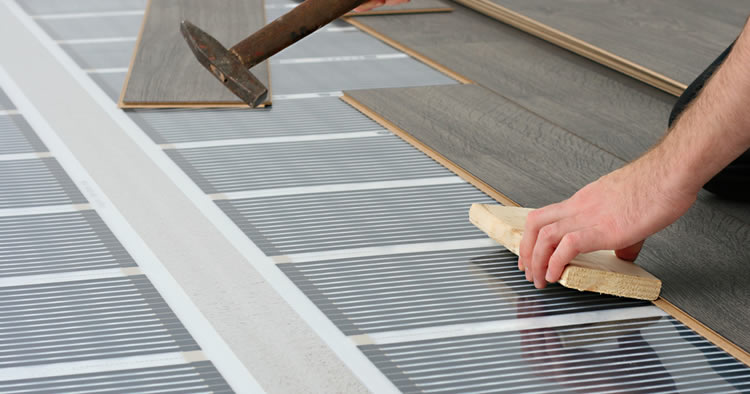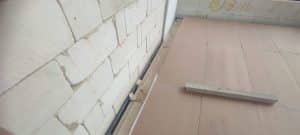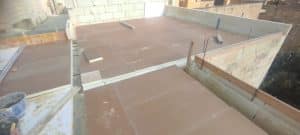Speed, Comfort, and Control — All in One Sheet| Underfloor Heating Sheet Heat-Up Time vs Other Systems
When choosing a heating system, one of the most practical questions is: how fast will it actually warm up my space? In this blog, we explore the increasingly asked question: underfloor heating sheet heat-up time vs other systems—and the results may surprise you.
For homeowners, developers, or renovators in Malta, knowing how quickly your heating system gets your rooms to a comfortable temperature is crucial. Whether you’re waking up on a chilly morning or entertaining guests, no one wants to wait an hour for the room to stop feeling like a fridge.
So, how do electric underfloor heating sheets stack up against radiators, water-based underfloor heating, and heat pumps when it comes to heat-up speed?
Let’s break it down—and help you make the smartest choice for your property.
1. What Is Heat-Up Time and Why It Matters| Underfloor Heating Sheet Heat-Up Time vs Other Systems
Before diving into comparisons, let’s define what we mean by heat-up time. This is the period a system takes to raise the room’s temperature from a cold start to a desired comfort level (usually around 21°C indoors in Malta’s cooler months).
The underfloor heating sheet heat-up time vs other systems becomes a key point when considering:
Daily comfort (do you have to preheat your home hours in advance?)
Energy efficiency (faster systems use less electricity for the same result)
Smart control responsiveness (how quickly does your thermostat adjust?)
Real-world usability (will the system keep up with sudden changes in temperature?)
Electric underfloor heating sheets generally outperform most traditional systems in this category—especially in smaller or well-insulated homes.
Let’s get into the numbers and comparisons.
2. Underfloor Heating Sheet Heat-Up Time: What to Expect| Underfloor Heating Sheet Heat-Up Time vs Other Systems
Electric underfloor heating sheets are designed to deliver fast, responsive heating—sometimes in as little as 10–20 minutes.
Why they’re so quick:
Ultra-thin profile (less than 1 mm): Heat doesn’t have to travel through thick screed.
Direct contact with flooring: Especially effective with tile or engineered wood.
Even heat distribution: Prevents hot and cold zones, raising room temp uniformly.
Minimal thermal mass: Unlike wet systems, sheets don’t require water to be heated and circulated.
💡 Average Heat-Up Time in Malta Conditions:
For a room with ceramic tiles and moderate insulation, expect 20–30 minutes to reach optimal temperature from a cold start.
That means you can wake up, turn it on, and enjoy cozy warmth before your coffee is ready. Perfect for winter mornings in towns like Rabat, Mosta, or Marsaskala.
3. Comparison Table: Underfloor Heating Sheet Heat-Up Time vs Other Systems| Underfloor Heating Sheet Heat-Up Time vs Other Systems
Let’s take a quick look at how electric heating sheets compare to other common systems in Malta:
| Heating System | Heat-Up Time | Energy Use During Start-Up | Maintenance Required | Ideal For |
|---|---|---|---|---|
| Electric UFH Sheet | 15–30 mins | Low | None | Apartments, villas, bathrooms |
| Wet UFH (water) | 2–3 hours | Medium to High | Annual service | New builds with concrete screed |
| Radiators (gas/electric) | 30–60 mins | Medium | High (bleeding, cleaning) | Existing homes with central heating |
| Split Heat Pumps | 20–45 mins | Medium | Annual checks | Bedrooms, living rooms |
| Wood Stove | 1–2 hours | High | Fuel and cleaning | Rural or off-grid areas |
As the table shows, underfloor heating sheet heat-up time vs other systems is dramatically shorter and more consistent. And without moving parts, pipes, or combustion, sheets are quieter, safer, and maintenance-free.
4. Factors That Influence Heat-Up Time| Underfloor Heating Sheet Heat-Up Time vs Other Systems
Even though underfloor heating sheets are fast, several key factors can influence their performance:
✅ Flooring Type
Tile: Highly conductive—best performance.
Engineered wood or laminate: Slightly slower, but still efficient.
Carpet: Not ideal. Traps heat and slows transfer.
✅ Insulation
Underfloor insulation boards reduce heat loss, speeding up heat-up time and lowering running costs.
Malta’s concrete slab floors must have a thermal break for optimal efficiency.
✅ Room Size & Layout
Smaller rooms (like bathrooms) heat up in 10–15 minutes.
Larger living rooms may need 25–40 minutes, depending on layout and airflow.
✅ Thermostat Settings
Programmable smart thermostats ensure the system turns on at the right times, preventing unnecessary delays.
👉 Need help choosing the right combination of flooring and sheet? Contact us for a consultation.
5. Why Radiators and Wet UFH Are Slower| Underfloor Heating Sheet Heat-Up Time vs Other Systems
Let’s take a closer look at why traditional systems like radiators and wet underfloor heating systems lose the heat-up race.
🔥 Radiators:
Heat through convection, warming air that rises and circulates.
Room can feel warm at the top and cold at floor level.
Metal takes longer to heat, and airflow is uneven.
Takes 30–60 minutes for full-room comfort.
💧 Water-Based UFH:
Requires heating and circulating water through pipes embedded in screed.
Screed acts as a thermal buffer—slow to heat, but slow to cool too.
Heat-up time is 2–3 hours, making it less responsive to rapid temperature changes.
Ideal for new builds, not quick retrofits.
Bottom Line:
If you want fast heat on-demand, underfloor heating sheet heat-up time vs other systems makes electric the clear winner.
6. Underfloor Heating Sheet Performance in Malta’s Climate| Underfloor Heating Sheet Heat-Up Time vs Other Systems
Malta’s mild winters (average lows of 9–12°C) make it the perfect environment for electric underfloor heating sheets. Unlike mainland Europe, you don’t need a large, slow system to combat sub-zero temperatures.
Instead, what Maltese homes need is:
Quick heat-up on chilly mornings or damp evenings.
Efficient heating in tiled or stone-floored homes.
Low operating cost without the need for gas boilers or oil tanks.
💶 Cost Example:
Heating a 10 m² room for 3 hours a day in winter costs €0.60–€0.80/day depending on insulation and electricity rates (€0.15–€0.17/kWh).
And because the heat-up time is so fast, you don’t have to leave the system running all day.
7. How to Maximize Your Sheet System’s Performance| Underfloor Heating Sheet Heat-Up Time vs Other Systems
To get the best results from your underfloor heating sheet, consider these tips:
Use 6–10 mm insulation boards to reduce downward heat loss.
Pair with ceramic or porcelain tiles for fastest heat transfer.
Install zoned thermostats to control each room individually.
Avoid placing thick rugs or furniture directly over heated zones.
Set your smart thermostat to turn on 15–20 minutes before wake-up or arrival times.
Want expert installation to ensure optimal performance?
👉 Check out our service
8. Smart Thermostats: The Secret to Ultra-Fast Comfort| Underfloor Heating Sheet Heat-Up Time vs Other Systems
One of the biggest advantages of electric underfloor heating sheets is how easily they integrate with smart thermostats and timers. This turns your fast heat-up system into a predictive and automated comfort solution.
Benefits of Smart Controls:
Pre-heating: Set the system to switch on 15–30 minutes before you wake up or return home.
Zoned control: Heat only the rooms you use, when you need them.
App control: Manage temperatures from your phone while you’re at work or traveling.
Usage insights: Some thermostats track energy consumption, helping you optimize efficiency.
Imagine coming back from the beach in Sliema to a perfectly warm bathroom—without lifting a finger.
💡 Pro tip: Pair your underfloor heating sheets with Wi-Fi-enabled thermostats for maximum control and minimum waste.
9. Heat Retention: Sheets Hold Their Own| Underfloor Heating Sheet Heat-Up Time vs Other Systems
Some might argue that water-based underfloor heating holds heat longer because of the thermal mass of screed—but electric underfloor heating sheets still perform impressively in this area, especially when used with proper insulation.
Here’s how:
Electric sheets are installed directly beneath the flooring.
Heat is delivered precisely where it’s needed—near the surface.
When paired with insulation boards, heat loss into the subfloor is minimized.
While they cool slightly faster than wet systems, they reach target temperature so quickly that pre-heating becomes unnecessary.
This makes them ideal for short, sharp heating bursts—perfect for Malta’s mild winters.
10. Eco-Efficiency: Why Faster = Greener| Underfloor Heating Sheet Heat-Up Time vs Other Systems
You might think a faster heat-up time leads to higher energy use—but in fact, the opposite is true.
Why electric sheets are more eco-friendly:
Less run-time: Reaches comfort temp faster, meaning less time drawing power.
Room zoning: Only heat the spaces in use.
Low thermal inertia: No need to heat for hours in advance.
No water heating or pumps: Unlike wet systems or radiators, sheets don’t waste energy on components.
Let’s say your bathroom is 6 m². Heating it for 20 minutes in the morning and 30 minutes at night uses about 0.9 kWh/day, or €0.13–€0.16/day. Over a 3-month Maltese winter, that’s under €15 in total.
Fast heat-up = lower bills.
Simple as that.
11. Real-World Scenarios: Heat-Up Time in Action| Underfloor Heating Sheet Heat-Up Time vs Other Systems
Let’s walk through a few practical examples:
Scenario 1: Busy Family Home
In a Naxxar townhouse, a family uses electric sheets in the kitchen and bathrooms. The system kicks on 30 minutes before breakfast and again before evening showers.
Result: Warm floors and comfort without heating the whole home.
Scenario 2: Short-Term Rental in Valletta
The owner of a short-term rental installs electric sheets to impress guests with instant warmth and no visible heaters.
Result: Faster room turnovers, rave reviews, and no radiator maintenance.
Scenario 3: Elderly Couple in Gozo
With health concerns in mind, this couple opts for a fast-heating, low-maintenance solution that doesn’t circulate dust like radiators.
Result: Better air quality, safer floors, and energy savings of over €120/year.
12. Frequently Asked Questions| Underfloor Heating Sheet Heat-Up Time vs Other Systems
❓ How long do underfloor heating sheets last?
A: Typically over 25 years with zero maintenance if installed correctly.
❓ Can they be used under laminate or engineered wood?
A: Yes, as long as the material is compatible with underfloor heating. Always check the floor’s max temperature rating.
❓ Is installation messy or expensive?
A: Not at all! Most installations take 1–2 days. Cost for a 10 m² room ranges from €500–€850, depending on your flooring and insulation choices.
❓ Do they interfere with Wi-Fi or electronics?
A: No. Sheets are fully shielded and compliant with EMF regulations.
❓ Where can I buy underfloor heating sheets in Malta?
A: Contact us directly here to get started or check out our service page.
13. The Final Verdict: Fast Heat Wins| Underfloor Heating Sheet Heat-Up Time vs Other Systems
When it comes to underfloor heating sheet heat-up time vs other systems, the verdict is clear:
Electric sheets heat faster.
They’re more energy-efficient in Malta’s mild winters.
Installation is simple and maintenance-free.
They provide luxurious, responsive warmth—exactly when and where you need it.
So whether you’re planning a renovation in Mdina or outfitting a new penthouse in St. Julian’s, electric underfloor heating sheets offer a smart, modern solution that outpaces traditional systems in both speed and efficiency.
14. Contact Us – We Make Warmth Happen| Underfloor Heating Sheet Heat-Up Time vs Other Systems
Ready to enjoy the fastest, cleanest, and most stylish heating in Malta?
👉 Contact us today to get a quote or schedule an installation
Our expert team is here to help you choose the best solution for your home or project.
15. Check Out Our Service Page| Underfloor Heating Sheet Heat-Up Time vs Other Systems
Want to see what makes our electric underfloor heating sheets the #1 choice in Malta?
👉 Check out our full service offering here
You’ll find details, prices, and everything you need to take the next step toward smarter heating.
16. Learn More About Underfloor Heating| Underfloor Heating Sheet Heat-Up Time vs Other Systems
Still curious about how these systems work? Check out this helpful Wikipedia article on underfloor heating




